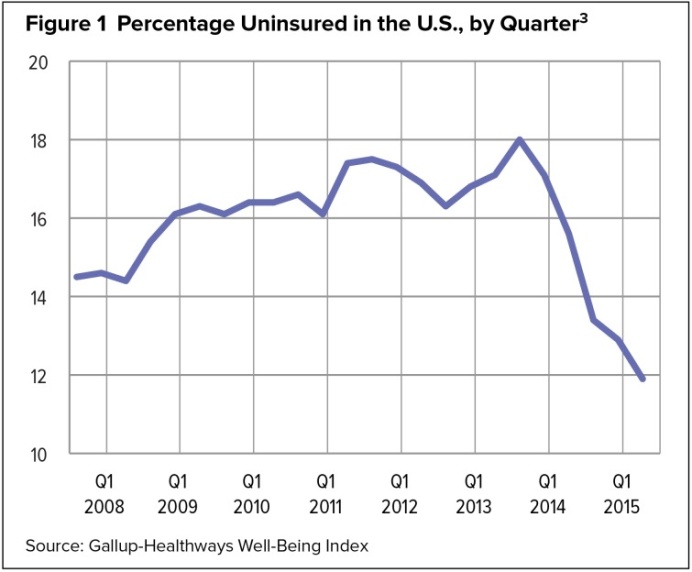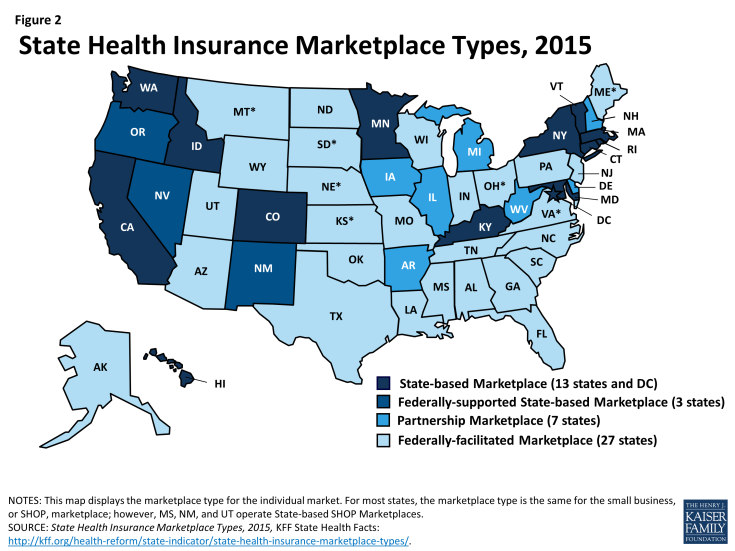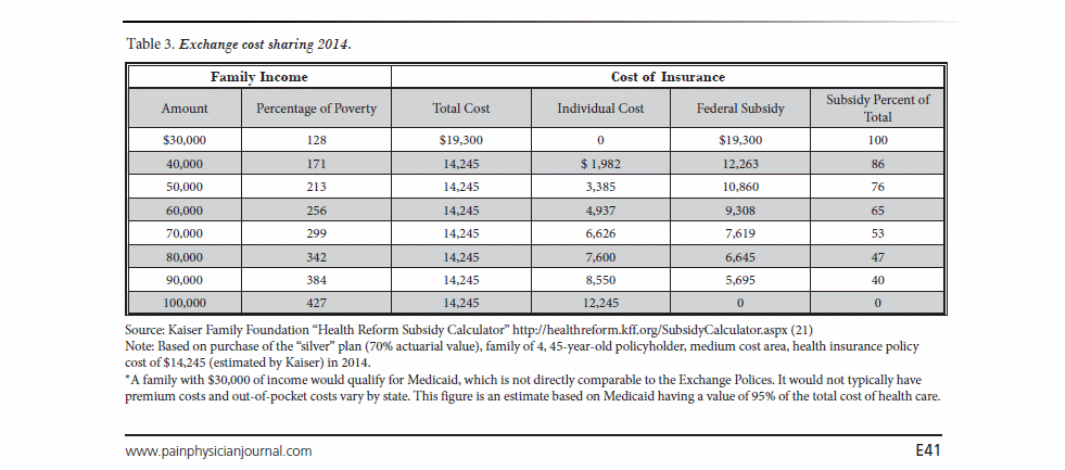The major overhaul that has remained controversial is the Obamacare that aims to spearhead the provision of affordable healthcare to all. Since the 1960s, the healthcare system has not received such changes, and the inception of Obamacare caused a stir-up everywhere. Headlines all over the United States have highlighted the controversies arising from the endorsed Affordable Care Act (ACA) by President Barack Obama in 2010. Despite the fact that this new law has faced uncountable challenges and strong unpopularity, it continues to achieve its objectives, largely due to the associated sanctions and penalties. People are not fully conversant with the ACA; hence, there are always emerging issues leading to unending court cases as individuals, businesses, and the marketplace try to unearth feasible implementation mechanisms of the ACA. This paper is a discussion of the controversies surrounding the ACA, and thereafter determines its efficacy in the current healthcare set-up.
In accordance with Reisman (2015), this paper argues that the new Affordable Care Act is beneficial, but it is also highly controversial resulting in the dissatisfaction of the people. In addition, the influence of politics and poor publicity has taken a toll on its receivership by the people; thus, the implementation of this act has received mixed reactions. Despite the many controversies surrounding the implementation of the ACA, the underlying rationale is noble and workable if minor adjustments are made. The mandates and penalties associated with this act make it unfavorable for most employers because their profits are bound to reduce at the expense of increasing the insured rate. In addition, employers are worried about recruitment and retention of employees as the future Cadillac tax poses a threat to employers with high value health benefit plans that supersede a specific predetermined amount (Galvin 2016). This action cannot be perceived positively because the same congress advocates for payment of high premiums in order for the insurance to intervene.
The ACA was meant to increase health insurance coverage by around 15% via extending the insurance service to individuals who have no access to this service; precisely, “individuals not covered by the US health programmes for the poor and the elderly and those who have not received coverage from their employers” (Why is Obamacare so controversial? 2014, par. 3). Whereas this is a good thing, the manner in which this is implemented is not succinct because some people complain of restricted access to healthcare as insurance companies insist on meeting a certain deductible before it can intervene; yet, as long as the healthcare insurance plan meets the requirements of the law, it is not clear as to why the insurance would fail to intervene under such circumstances (Jan 2015). According to Reisman (2015), the ACA has surpassed expectations by reducing the number of individuals without insurance significantly: almost 17 million more Americans have benefited from this new law. Statistics indicate that there has been a remarkable dip in the uninsured rate: 6% since 2013 at 11.9% in the first quarter of 2015. This rate has been regarded as the lowest in history since Gallup began tracking this phenomenon in 2008 as shown in the figure below:

Thus, despite the opposition that is based on selfish interest, the new but controversial healthcare system by president Obama is a good thing for America. These controversies are bound to be resolved amicably.
The ACA increases the insured rate through federal subsidies, expansion of the Medicaid program in various states, and use of parental policies to cover children till they reach 26years of age. Also, the ACA regulations oppose the termination of policies for individuals with pre-existing conditions the minute they get sick. Whereas the Obamacare seems to expand accessibility to affordable health care, controversies about its accessibility in federally-run marketplaces versus state-based marketplaces is evident due to variation in the kind of marketplace prevailing in each state as shown by the figure below.

The administration within a state might act as the impediment to the successful implementation of the ACA because a look at the table below, which has been adapted from Manchikanti et al. (2011), indicates the commitment of the federal government to aid in offsetting the insurance premiums but managing to access quality healthcare. Hence, it is all a matter of sheer politics that tend to thwart the prudent and noble intentions underlying the ACA.

It is only now in the recent decade that Americans are content with the healthcare system due to reduced medical bills and financial barriers to accessing healthcare services due to the introduction the Patient Protection and ACA (Blumenthal, Abrams, & Nuzum 2015). However, before this realization, embarking on the ACA was not received with the expected enthusiasm. Usually, people are resistant to change without taking the time to review this change. In an article by Appleby (2014) in the Washington Post, an uproar over policy cancellations were eminent and brought about a political firestorm for Barrack Obama as these cancellations counter-indicated his promise on retaining current insurance policies if individuals were content with them. On a different spectrum, the issue of compliance to already laid-down health law’s standards emerged, which has resulted in numerous inconveniencing cancellations. Different states have handled this matter differently; whereas some have given a year’s span for discontinuation, others have an extended duration till 2017.
Individual plans have been at a greater disadvantage in comparison to those provided by small businesses (Appleby 2014). In a study conducted by Antwi, Moriya, and Simon (2012), it was revealed that an upsurge in extended parental coverage to older children above 19 years regardless of their studentship was associated with reduced marginal costs and increased marginal gains. On the flipside, a substantial percentage of young adults remain uninsured even though the parents have insurance policies. Most of the research studies have looked at the rate of the insured versus that of the uninsured as success indicators for the ACA. Solely focusing on the rate of individuals that are insured can misguide an individual in reference to the success of the ACA as other domains that influence the success of the ACA receive little attention.
Apparently, most individuals and small businesses preferred to renew old policies if provided with an option because they were deemed to be relatively cheaper. Yet, in comparison to the old scheme, the new scheme has more coverage options because it includes maternity and prescription coverage. In addition, it puts a limit to the consumer costs due to the provision of government subsidies. In addition, the new scheme nullifies the earlier provision that allowed access to insurance policies based on an individual’s health. Whereas the ACA is increasing the insured rate, physicians are opting out of the system as La Couture (2014) indicates. Apparently, the ACA promotes quality health care at relatively low costs, but at the expense of the doctors. Due to the high competition for low reimbursement rates, even the private insurers now have a lower reimbursement rate than Medicare, which is deemed the standard. Subsequently, doctors are required to work more now that the number of insured patients is high. However, attending to more patients is considered futile in the light of the already high volume of patients (Fodeman 2016; Page 2013).
Earlier on, this paper indicates that governments are obliged to offset the deductibles and out-of-pocket payments through subsidies. Rosenbaum (2011) and Sommers et al. (2013) indicate improved access to healthcare and reduced delays in getting treatment under the ACA. On a different based on a case of the Andersons described later, the mechanism under which these subsidies prevail are not clear as narrated by Jan (2015). Despite paying a monthly deductible of $875 every month, they were required to pay an additional deductible of $7,000 for the insurance to offset their medical bill. Hence, the actual effect of the ACA in relation to access of healthcare while evaluating the relationship between deductibles, associated copayments, and amount insured in case of a health crisis need to be determined. The study by Sommers et al. (2013), the case study of the Andersons and La Couture’s (2014) article are indications of the prevailing controversies revolving around the ACA. Another study by Galvin (2016) indicates that high deductible plans are the most effective plans for employers, insurers and individuals. On a different note, Jan (2015) shows that these high deductible plans limit access to healthcare for all individuals contrary to the objectives of the ACA. La Couture (2014) indicates that some low-income individuals may be enrolled in the high deductible plans and end up not paying the required premiums; hence, not reimbursement to the healthcare provider. Another study by Wherry and Miller (2016) indicates the positive effects of the Patient and Protection ACA in relation to increased insurance coverage, improved quality of health due to more interventions for chronic ailments, and escalated levels in utilization of health. Therefore, if this act is working in some states, it is likely that the issues in other states can equally be resolved with better integration efforts and commitment.
Discussion and Conclusion
Five years is quite a short time to exhaustively determine the effects of the new Obamacare under the ACA. The high rates of insured people tend to shroud the reality behind the ACA based on the subjective views of various individuals and institutions. The increased numbers of individuals enrolling for the ACA policy stemmed from the enthusiasm that came along with hope for improved access to healthcare services as was the case with the Andersons until reality dawned on them (Jan 2015). Despite the high deductibles, healthcare still remains unaffordable due to increased out-of-pockets healthcare costs as indicated by the case of the Andersons. On a different note, the arguments presented herein indicate that the controversies surrounding the ACA are based on misconceived perceptions and misinterpretations of the ACA act.
There is the issue of misconceived benefits of the old scheme as opposed to the new scheme, but in reality, the new scheme is more comprehensive and more beneficial because of the provision of government subsidies. In a bid to ensure provision of quality health care, the new scheme has increased coverage options at affordable premiums considering the stipulated and accepted policy package. Better quality is associated with extra costs; hence, the reinforcement of the minimum essential coverage, which is deemed expensive to some individuals. The Internal Revenue Service articulately presents the definition of a marketplace in reference to provision of subsidies. On the contrary, the ACA is succinct on the provision of subsidies to state-based marketplaces only. Hence, the emergence of issues surrounding the same, such as in the King v. Burwell court case (Musumeci 2015). This controversy has not been holistically resolved in all states, but solutions from other states and federal governments are being imported to solve similar controversies in other states and promote the success of the ACA.
Evidently, consumer confusion is apparent because the ACA is not articulate on its provisions. There is need for educating the public through community meetings, workplace seminars and educational talks on the ACA and how it operates. People cannot see the positive side of the ACA because they might have been used to living in mediocrity that they cannot see the benefits of this new scheme. This ACA promotes quality in the sense that there will be reduced Medicare Readmissions, which means that healthcare workers are required to ensure that they provide optimal healthcare to avoid associated penalties. Subsequently, they will enjoy the full reimbursement amount. More conclusive research is required to examine the effects of the ACA from various perspectives other than increased insurance coverage.
References
Antwi, YA, Moriya, AS, & Simon, K 2012, “Effects of federal policy to insure young adults: Evidence from the 2010 affordable care act dependent coverage mandate” Working Paper 18200. National Bureau of Economic Research, Cambridge, MA.
Appleby, J 2014, “Insurers poised to cancel health plans that don’t comply with Affordable Care Act”, The Washington Post, Web.
Blumenthal, D, Abrams, M & Nuzum, R 2015, “The Affordable Care Act at 5 years”, The New England Journal of Medicine, vol. 372, pp. 2451-2458.
Fodeman, J 2016, The new health law: Bad for doctors, awful for patients, Web.
Galvin, R 2016, “How employers are responding to the ACA”, The New England Journal of Medicine, vol. 374, pp. 604-606.
Jan, T 2015, Critics say high deductibles make insurance unaffordable, Web.
La Couture, B 2014, Health care providers are opting-out of Obamacare, Web.
Manchikanti, L, Caraway, D, Parr, AT, Fellows, B & Hirsch, JA 2011, “Patient Protection and Affordable Care Act of 2010: Reforming the health care reform for the new decade”, Pain Physician, vol. 14, pp. e35-e67.
Musumeci, M 2015, Are premium subsidies available in states with a Federally-run marketplace? A guide to the supreme court argument in King v. Burwell, Web.
Page, L 2013, 8 ways that the ACA is affecting doctors’ incomes, Web.
Reisman, M 2015, “The Affordable Care Act, Five Years Later: Policies, Progress, and Politics”, Pharmacy and Therapeutics, vol. 40, no. 9, pp. 575–600.
Rosenbaum, S 2011, “The Patient Protection and Affordable Care Act: Implications for Public Health Policy and Practice”, Public Health Reports, vol. 126, no. 1, pp.130–135.
Sommers, BG, Buchmueller, T, Decker, SL, Carey, C & Kronick, R 2013, “The Affordable Care Act has led to significant gains in health insurance and access to care for young adults”, Health Affairs, vol. 32, no. 1, pp. 165-174.
Wherry, LR & Miller, S 2016, “Early coverage, access, utilization, and health effects associated with the Affordable Care Act Medicaid expansions: A quasi-experimental study”, Annals of Internal Medicine, Web.
Why is Obamacare so controversial? 2014, BBC News, Web.